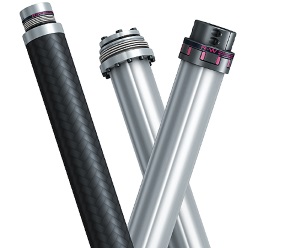Line shafts may conjure up images of Industrial Revolution-era factories, with whirring belts and machines, but just what is a line shaft and are they still relevant today?
In the simplest definition, a line shaft is the rotating shaft part of a system of mechanical couplings between the power source in a factory and the machines that do work. These rotating shafts transmit mechanical energy throughout the factory, and were usually interconnected to each other and to machines using various systems of pulleys, gears, and other mechanical methods. Nineteenth century engineers considered this to be state-of-the-art technology before electricity was introduced and motors could be used to drive machines on their own power.
Early factories used one power source, whether that was a steam engine, a water wheel, or another source of motion. It was located in one portion of the factory, but that one power source had to drive tens to hundreds of machines all throughout the factory. Line shafts allowed this to happen, and because they could be fastened overheard, along walls, and the like, they could be kept out of the way. Furthermore, this setup avoided having to spend money on another power source. Indeed, this was not always practical if that power source happened to be something like running water.
The most common way to couple together machines and the shafts was with belts. Various materials were used, but one of the most common was leather. Engineers at the time argued over what material was best, what arrangement were best, and how it was best to hook everything together. Energy losses were a continual headache, with losses from loose belts, friction inside bearings, and inherent limitations in transmitting mechanical power across such distances occurring frequently. Eventually, with the rising expense of fuel, and the increasing availability and technical superiority of motors run by electricity, the line shaft mostly faded away into history. Some working examples survive in industrial history museums.
But is that it? Is such a concept irrelevant to modern manufacturing? Not quite. Shafts that transmit motion between various parts of a system still exist. Sometimes called jackshafts, there are still uses for transmitting mechanical power between one point and another, with jackshafts typically being shorter. Some of these include some automation uses, assembly line, and specialized systems. Even though an entire factory driven by line shafts all spinning due to one power source may have long since passed from mainstream manufacturing, there are still instances in which systems transmit motion from one section to another using shafts and couplings. Roller conveyor belts are one example, as are many systems in which locating the power source away from working conditions is important, such as in dusty, dirty, or dangerous areas, or for serviceability reasons. In these situations line shafts still see some use.
